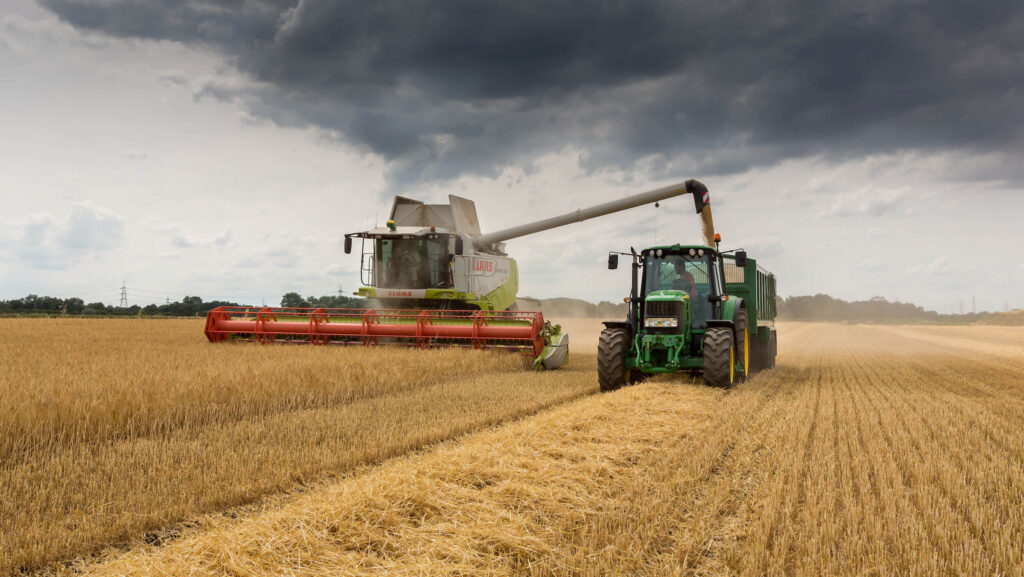Mixed start to harvest with weather delays and disappointing yields
 © Tim Scrivener
© Tim Scrivener Harvest has got off to a mixed start across the southern half of the UK, with some crops proving very disappointing and others a pleasant surprise.
See also: 3 risks to assess before drilling winter wheat early
Cornwall
“Diabolical weather” has prompted a slow start to harvest for John Moss at Howton Farm near Saltash, Cornwall.
He is about a week behind schedule across the 600ha farm.
“We have only done a day and a half of combining so far, so we are late in comparison to previous years,” he says. “We are desperate for some sunshine to just get things moving”.
Rain brought oilseed rape harvest to an immediate stop just hours after starting. Yields are expected to be drastically down, with John predicting 1.9t/ha compared with 4.4t/ha crop last year.
“We need some sunshine to cut the rest of the oilseed rape along with the oats, wheat, beans, and rye.”
John also grew the winter barley variety Caravelle for the first time this year and began cutting 24ha of the crop on July 18.
Initial yields of the crop came in at 6.9t/ha and 17% moisture, with a specific weight of 65kg/hl.
However, John is yet to harvest enough to gauge a clear picture of output and quality.
Gloucestershire
For Ian Branstone, harvest is in full swing and the outlook is positive at Bourton Hill Farm, Bourton-on-the-Water.
He is halfway through cutting Rocca oilseed rape, and it is yielding particularly well, averaging 4t/ha at 7-12% moisture, with another 50ha remaining.
With the seeds twice the size of normal and rich in oil, Ian is optimistic about the results of the sample analysis.
It’s a similar sentiment for the winter wheat, which is grown on mostly Cotswold brash, 640ft above sea level. It is now ready for combining and looking equally promising, along with spring barley and maple peas.
“We are optimistic for the wheat, but I won’t settle until it’s in the shed,” he notes.
“We are growing Siskin and Extase which are looking fantastic.”
Kent
Further east, combining is progressing well at Lower Garrington Farm, Canterbury, where Robert Spencer has completed oilseed rape and winter barley harvest.
The Ambassador rapeseed yielded 3.6t/ha, an average that is now the norm compared with its peak of 4.4t/ha five years ago.
Robert attributes this to a combination of weather and pest challenges.
“The presence of flea beetle has created yield losses, and the crop did finish very quickly,” he says.
“It’s unusual to harvest it before our winter barley, but I am guessing the rooting is weaker due to a wet spring – and then the brief warmer days saw it run out of moisture and finish quicker.”
He predicts that the lack of sunshine has lost 1t/ha in yield across the Tardis winter barley, which yielded 8.2t/ha compared with last year’s average of 9.5t/ha.
Although the yield was disappointing, the specific weights were surprisingly good, coming in at 66kg/hl.
With the wet weather encouraging septoria and a mild winter increasing brown and yellow rust, Robert’s main challenge and expense has been a rise in fungicide use, as he looks to begin harvest of wheat, beans and oats soon.
Essex
It’s been a similarly lacklustre start for Richard Speakman at Sandon Lodge Farm, Chelmsford. “The winter barley is all complete and we’ve had very disappointing yields,” he says.
Growing predominantly Tardis, the overall average was 6.4t/ha – although one farm did under 4.9t/ha. Overall, yields were 1.85t/ha down on the usual average.
“We had one field of Caravalle, which outperformed the Tardis, by 2.7t/ha,” says Richard.
Specific weights were also low, at 60.5-63.1kg/hl – but at least the crop came off dry, below 15% moisture.
“We’re hoping for better things to come, but everything is very thin where it lay wet over the winter, and ryegrass is a big issue.
“We grow a lot of milling wheat and grain fill will be a big concern due to the lack of sunshine.”
Having sprayed the wheat off on 23 July, Richard expects to be into the wheat in 10-14 days’ time.
“We normally start on 28-30 July, so we’re almost two weeks behind.”

